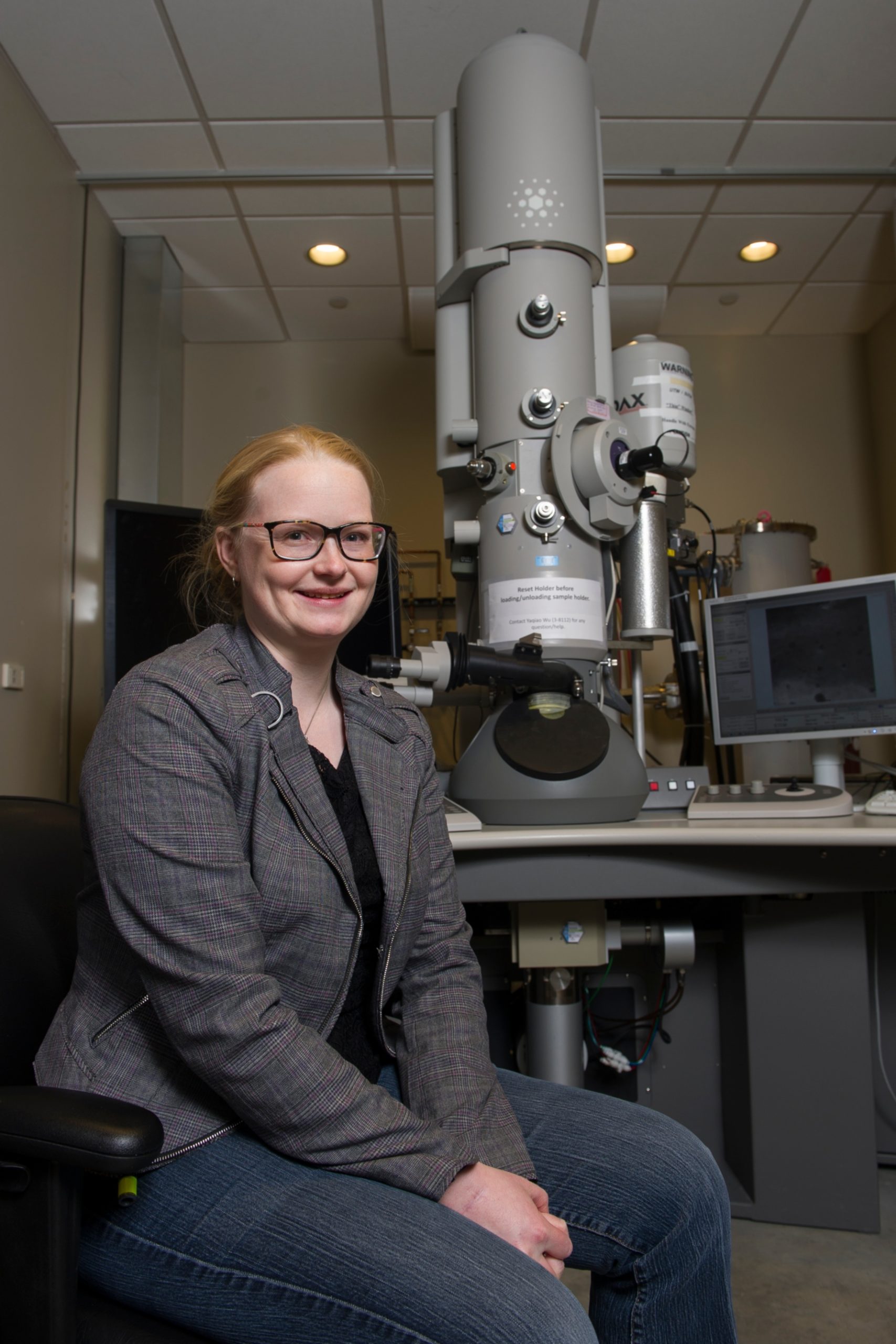By Paul Menser, for CAES Communications
It was a homecoming of sorts when Dr. Elizabeth Getto came to the Center for Advanced Energy Studies (CAES) to make use of its Microscopy and Characterization Suite (MaCS).
A mechanical engineering instructor at the U.S. Naval Academy, Getto, 29, was born in Idaho Falls, the daughter of an instructor at the Naval Reactors Facility. The family left when she was 1, but the die was cast. Getto earned her master’s and doctorate degrees in nuclear engineering from the University of Michigan, and when the Naval Academy put out word that they were looking for instructors, she answered the call, taking an assistant professorship in August 2016.
Through the Nuclear Science User Facilities (NSUF), Getto is conducting a rapid turnaround experiment (RTE) at CAES to study the effects of radiation and welding on oxide dispersion strengthened (ODS) steels, commonly used in reactor vessels. The work is also being funded in part by the Defense Threat Reduction Agency (DTRA).
The materials challenge is the biggest one for advanced reactors, Getto said. Ultimately, the research will help engineers understand how long a reactor can be run before adverse conditions in the cladding need to be addressed.
RTEs are short-term projects of six to nine months with tightly focused goals. Getto is using the focused ion beam at Michigan, an NSUF partner facility, and the MaCS at CAES for characterization. The advantage of working through NSUF is that the funding is taken care of, allowing her to focus on the research.
As a new professor at an undergraduate institution, $50,000 means an awful lot to me, Getto said. It also signals a relationship between the Naval Academy and NSUF that she hopes to see expand. The USNA has about nine faculty and 45 people on staff overall focused on nuclear research, plus a wealth of materials. In Getto’s research, the focus is on MA 956 ODS alloy, a friction welded iron-based superalloy in relatively short supply.
While she plans to publish, perhaps the biggest impact of her research could be the involvement of Naval Academy midshipmen, who will be working with the results of her microcharacterization work on the transmission electron microscope at CAES. In the next year, she hopes to have midshipmen using the TEM themselves.
Coming from a Navy family, Getto has had first-hand view of nuclear continuity that goes back to the early 1950s and the era of Admiral Hyman Rickover (Getto teaches in Rickover Hall). This gives the Navy a special leadership position in the nuclear research community, she said.
The next generation has some new ideas, she said. We’re much more willing to reach across the aisle to environmentalists, and more open to new technologies. It’s one thing for a professor to say, ‘Nuclear energy is the solution,’ but to get buy-in from midshipmen at the Academy is another matter.
Getto’s work has recently been used to set the standard for ion irradiation techniques at recent best practices workshops. While at the University of Michigan, she received many awards for her research, including first place in the 2016 Innovations in Fuel Cycle Research Award: Advanced Fuels Division and the 2016 American Nuclear Society Materials Science and Technology Division’s Student Literary Award.






